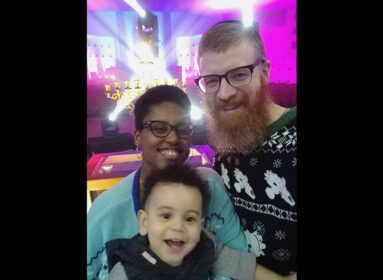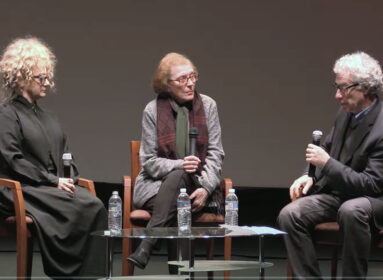Annual study of American Jewry shows higher numbers, fewer institutions
By Cindy Mindell
 One hundred years from now, when historians look back on American Jewry in the late 19th century and beyond, it’s not a website that they’ll turn to. Rather, the co-editors of the American Jewish Year Book are confident that it is this long-running “annual record of the North American Jewish civilization,” as its subtitle once read, that will be the valued scholarly resource of choice.
One hundred years from now, when historians look back on American Jewry in the late 19th century and beyond, it’s not a website that they’ll turn to. Rather, the co-editors of the American Jewish Year Book are confident that it is this long-running “annual record of the North American Jewish civilization,” as its subtitle once read, that will be the valued scholarly resource of choice.
First published in 1899 by the now-defunct Jewish Publication Society of North America, the American Jewish Year Book (AJYB) was inspired by the Jewish Year Book, an annual almanac published in the UK every year since 1896. The AJYB was taken over by the American Jewish Committee (AJC) in 1908, which published the work every year until 2008.
After a four-year hiatus, what had become the most authoritative account of American Jewry resumed publication, the result of an academic partnership between the University of Connecticut and the University of Miami, and scholars from North America and Israel.
“When we went to revive the Year Book, people said, ‘With the internet, do we need this?’” recalls co-editor Dr. Ira Sheskin, director of the Jewish Demography Project of the Sue and Leonard Miller Center for Contemporary Jewish Studies at the University of Miami. “In 100 years, Jewish Federations may be listed online, but a list of past Federations won’t be. For historians wanting to trace what happened over time, they will use the Year Book.”
The 113 annual volumes have served as a major resource for data on the North American Jewish communities for Jewish leaders and institutions, as well as universities and libraries throughout the world.
For more than a century, AJYB was the premier place for leading academics to publish long review chapters on topics of interest to the North American Jewish community. The work also documented the changing demography and institutional structure of the Jewish community.
Since 2008, the Year Book has been co-edited by Sheskin and Dr. Arnold Dashefsky, founding director of the UConn Center for Judaic Studies and Contemporary Jewish Life and director of the Mandell L. Berman Institute-North American Jewish Data Bank. The 2013 volume, published by Springer in December, comes in the wake of the Pew Research Center’s much-analyzed A Portrait of Jewish Americans. In addition to conducting their own population survey, Dashefsky and Sheskin were responsible for the sections of the Year Book that address Jewish institutions and major events in the North American Jewish community in 2013.
“What stands out about the comparison between the Year Book estimate of the Jewish population and the Pew study is that our U.S. Jewish population estimate in 2013 came up with more or less the same number,” says Sheskin. “In addition, Brandeis University, using a third methodology, also found a similar number. None of the methodologies is perfect, but we’re all coming up with the same number.
We feel encouraged by this because, generally, our 6.7 million number was thought to be an overestimate, especially in comparison with the 2000-01 National Jewish Population Survey, which was an underestimate at 5.2 million Jews, as judged by most of our colleagues.”
Dashefsky and Sheskin also inventory the changing “infrastructure” of the American Jewish community – buildings, organizations, Holocaust memorials, overnight camps, publications, and the like. While the number of synagogues is down, they noted an expansion in the number of other institutions like overnight camps, museums, and cultural festivals. “This reflects the greater secularization in society in general and a decreased desire to participate in or affiliate with organized Jewish institutions,” says Dashefsky, a resident of Manchester.
Consistent with the Pew study, the editors found declining interest in institutional affiliation, and a corresponding decline in the number of synagogues, along with a complementary growth of independent minyanim.
In addition, there are now thousands of Jewish and Israel-oriented websites, says Sheskin. “In all of my local Jewish community studies, I asked, ‘Have you visited a website with Jewish content in the past year?’ and the percentages of people who answered yes are impressively high, even among intermarried couples,” he says. “If you’re intermarried and there’s something you want to know about Judaism and you’re embarrassed to ask, the Internet is the place you can go and not be embarrassed; it is the least embarrassing way to get basic information on Judaism.”
As a local example of a national trend, Dashefsky points to the recent chain of events surrounding the near-closing and new ownership of the Crown Market in West Hartford. “Things are breaking down in the U.S. Jewish community,” he says. “When people tell me that they are pessimistic about the future of American Jewry, I respond that Jewish life frequently is deconstructing and then reconstructing into something new. I’m an optimist that we can find a way to reconstruct American Jewry, even with all the changes taking place. Our job is to build on the message of optimism regarding the American Jewish community and find those points that we can strengthen, even though there are problems emerging. I wouldn’t cover up the limitations and weaknesses that the Jewish community is experiencing, but we want to build on the pluses we have and not be bogged down by a pessimistic outlook.”
While the talk in the American Jewish community has centered mostly around the population numbers revealed by the Pew survey, both Dashefsky and Sheskin say that an inventory must go beyond a mere tally. “Jews have never been a numerous people and we’re probably not going to grow anytime soon,” says Sheskin. “So we have to make our mark by the quality of our people and our contributions. In that regard, the Jewish communal infrastructure is important data.”
To wit, after Hurricane Andrew devastated the Southern U.S. in 1992, the Greater Miami Jewish Federation was one of the organizations that worked to help in the recovery efforts. Miami resident Sheskin recalls, “My wife and I came to help out and were talking to a black man from Jamaica who had lost everything and had come to get clothing. My wife asked him how he knew to come there and he said, ‘I knew that Jewish people would help.’”
Dashefsky echoes the sentiment. “While the going number of American Jews you will read about is 6.7 million, the more important point is our ability to influence events in the country through our behaviors and our values.”
For more information: www.jewishdatabank.org.








 Southern New England Jewish Ledger
Southern New England Jewish Ledger











